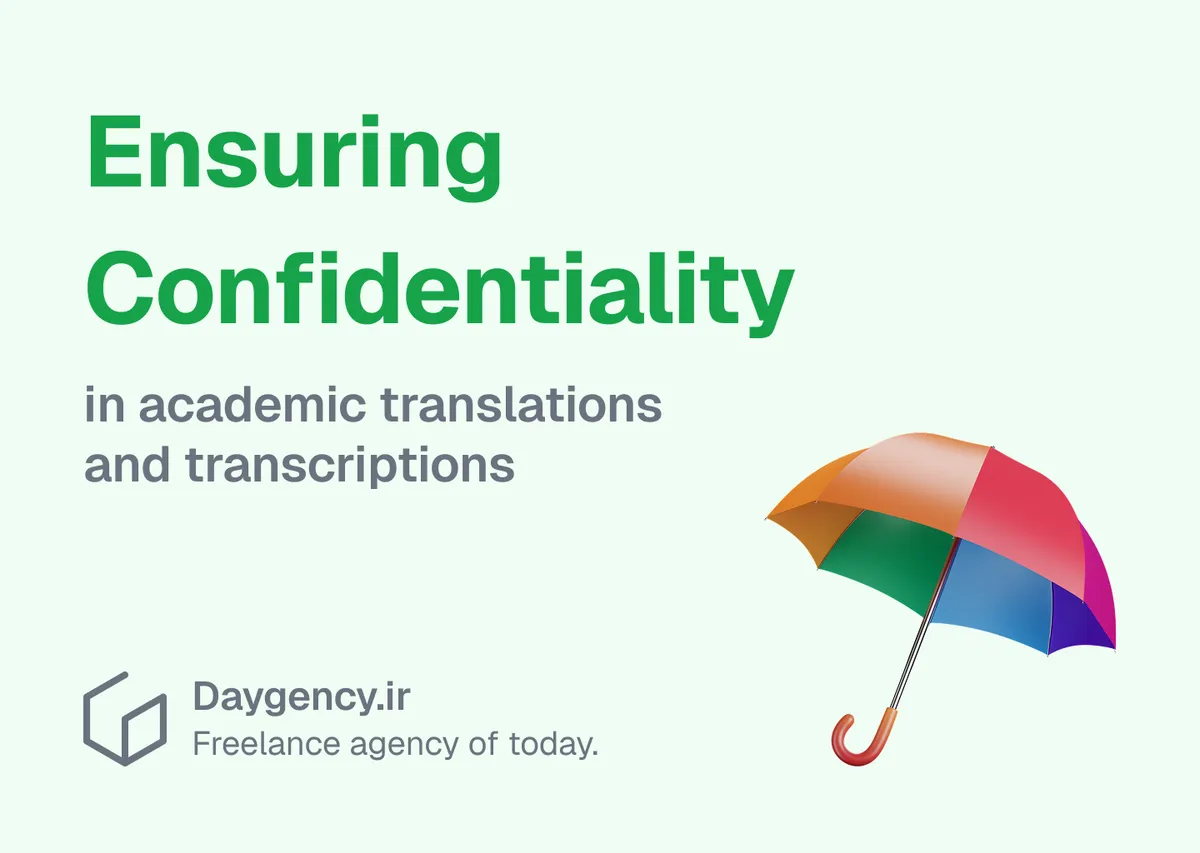In academic research, confidentiality is essential, particularly when handling sensitive data such as unpublished findings, proprietary information, or personal details from interviews and surveys. Failing to protect this data can compromise the integrity of the research, expose participants to privacy risks, and damage the reputation of the researchers and their institutions.
In this article, we will examine the common risks associated with academic translations and transcriptions and outline best practices for safeguarding sensitive research data.
Why Confidentiality Matters in Academic Translations and Transcriptions
Academic translation and transcription often involve handling confidential material, such as:
- Unpublished manuscripts, articles, or grant proposals
- Participant interviews or focus groups containing personal information
- Proprietary data related to technical or scientific research
- Legal, financial, or medical documents tied to academic studies
Protecting this information is critical for several reasons:
- Maintaining research integrity: Leaked or mishandled data can compromise the credibility of the research.
- Protecting participant privacy: Interviews or personal data from subjects must be kept confidential to adhere to ethical guidelines.
- Avoiding legal and regulatory violations: Academic institutions often follow data protection laws, such as GDPR or HIPAA, making confidentiality legally required.
- Preventing intellectual property theft: Academic translations may involve proprietary research that must be safeguarded from unauthorized use.
Common Confidentiality Risks in Academic Translations and Transcriptions
A. Unauthorized Access and Data Leaks
Improper handling of files or the use of unsecured platforms can lead to unauthorized access or accidental data leaks.
- Risk: Sending sensitive academic materials via unsecured email or file-sharing services may expose the data to third parties.
- Example: A researcher shares an unpublished manuscript with a translator using a public cloud storage service, risking unauthorized access.
B. Insufficient Data Anonymization
When transcribing or translating interviews, failing to properly anonymize participant details can reveal identifying information.
- Risk: Including names, locations, or personal details in the final transcript could breach confidentiality agreements.
- Example: An interview with medical patients mentions specific hospital names and patient details, putting privacy at risk.
C. Poor File Management and Storage Practices
Storing sensitive academic data on personal devices or unprotected platforms increases the risk of theft, loss, or accidental exposure.
- Risk: Inadequate encryption or password protection makes files vulnerable to unauthorized access.
- Example: A transcriptionist stores research files on a personal, unencrypted laptop, which is later stolen.
Best Practices for Protecting Sensitive Research Data
A. Use Secure File Transfer and Storage Solutions
When transferring and storing academic documents, use platforms with encryption and access control features.
- Use encrypted file-sharing services such as Tresorit, WeTransfer Pro, or FileMail for secure transfers.
- Store files on GDPR-compliant platforms with two-factor authentication (2FA).
- Avoid using personal email accounts or free cloud services for sensitive data.
B. Implement Strict Access Controls
Limit access to confidential data to only authorized individuals directly involved in the project.
- Restrict access using password-protected folders and documents.
- Implement role-based permissions to prevent unnecessary access.
- Regularly audit access logs to detect any unauthorized activity.
C. Anonymize and Redact Sensitive Data
To protect participant privacy, remove or obscure identifying information before translating or transcribing.
- Replace participant names with pseudonyms or initials.
- Redact or generalize specific locations or institutions.
- Use data masking techniques for large datasets to prevent re-identification.
D. Require Non-Disclosure Agreements (NDAs)
When outsourcing translation or transcription, require external contractors to sign NDAs to protect confidentiality.
- Include specific clauses on data handling, storage, and destruction.
- Specify legal consequences for breaches of confidentiality.
- Ensure the translator or transcriptionist complies with institutional data policies.
E. Follow Data Protection Regulations
Adhere to relevant data protection laws, especially when dealing with participant data or proprietary research.
- For EU-based research, comply with GDPR regulations.
- For medical data, follow HIPAA guidelines.
- Work with translators and transcriptionists who are familiar with international data protection standards.
F. Use Secure Transcription and Translation Software
When working on sensitive academic data, use privacy-focused tools rather than free, public platforms.
- Use GDPR-compliant transcription tools such as Sonix or Rev with end-to-end encryption.
- Choose secure translation management systems (TMS) with data protection features.
- Avoid free, online translation tools that may store or share data.
G. Delete or Archive Data Securely
Once the project is complete, securely delete or archive sensitive data according to university or institutional policies.
- Use data wiping tools to permanently delete temporary files.
- Archive completed projects in encrypted storage with limited access.
- Follow data retention policies and avoid keeping unnecessary files.
Key Takeaways for Confidential Academic Translations and Transcriptions
To protect sensitive research data in academic translation and transcription, it is essential to:
- Use secure file transfer and storage platforms with encryption.
- Restrict access through password protection and role-based permissions.
- Anonymize personal data in transcripts and translations.
- Sign NDAs with external translators and transcriptionists.
- Follow GDPR, HIPAA, or other relevant regulations.
- Use secure, professional transcription and translation tools.
- Safely delete or archive data after project completion.
Conclusion
Ensuring confidentiality in academic translations and transcriptions is not just about protecting data—it is about safeguarding the credibility, privacy, and integrity of research. By following best practices such as secure file handling, anonymization, and compliance with data protection regulations, universities and researchers can minimize risks and maintain the highest standards of confidentiality.
If your academic institution requires confidential, high-quality Farsi-English translation or transcription services, partnering with a professional freelance agency that prioritizes data security is the best way to protect your sensitive research.
Need Professional Academic Translation Services?

Our agency specializes in Farsi-English academic journal translation, ensuring accuracy, cultural sensitivity, and scholarly precision. Whether you’re a researcher, professor, or publisher, we help you reach a global audience with clear, professional translations.
Contact us today for expert academic translation services that meet the highest standards!
